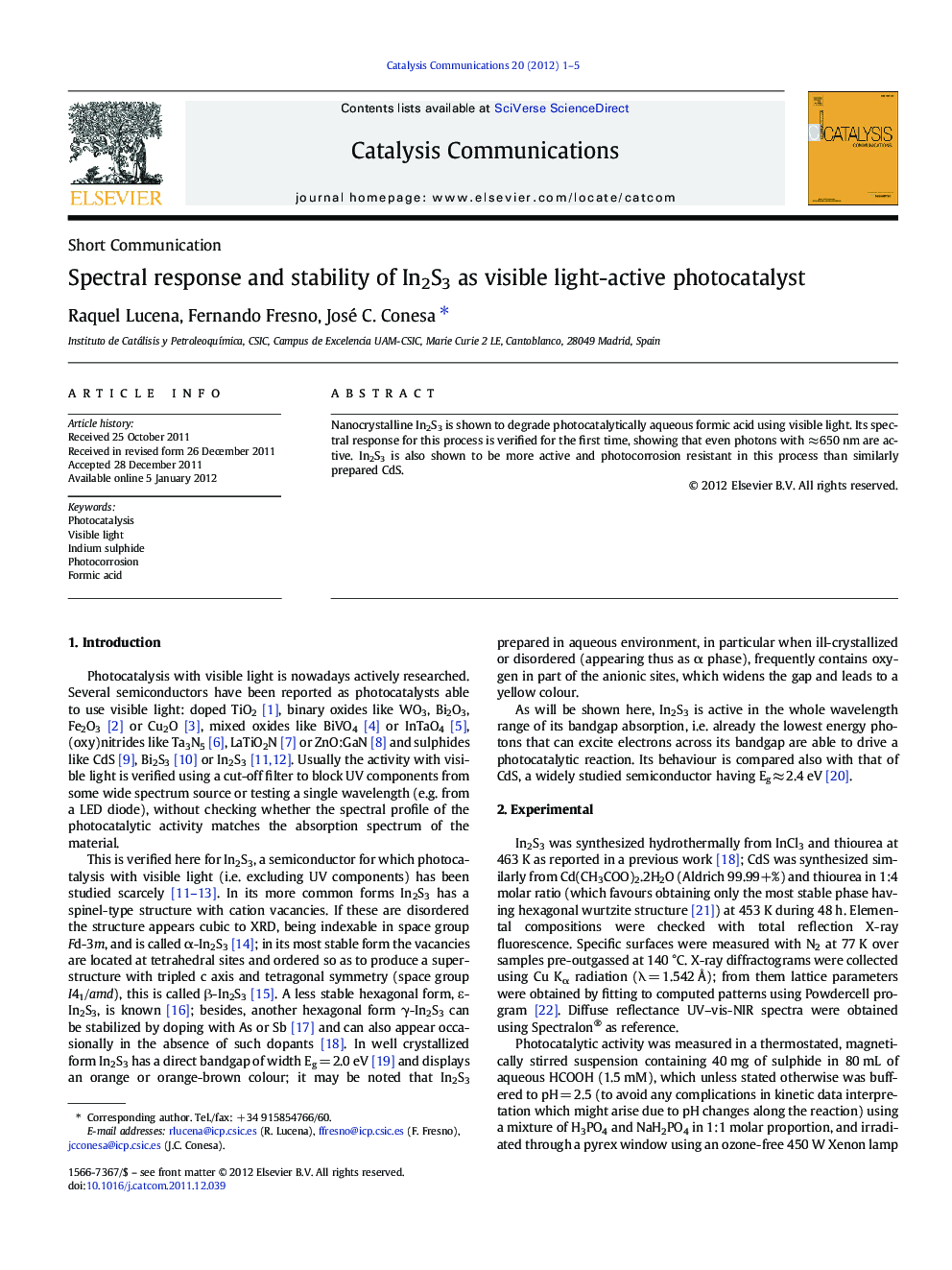| Article ID | Journal | Published Year | Pages | File Type |
|---|---|---|---|---|
| 50769 | Catalysis Communications | 2012 | 5 Pages |
Nanocrystalline In2S3 is shown to degrade photocatalytically aqueous formic acid using visible light. Its spectral response for this process is verified for the first time, showing that even photons with ≈ 650 nm are active. In2S3 is also shown to be more active and photocorrosion resistant in this process than similarly prepared CdS.
Graphical abstractFigure optionsDownload full-size imageDownload as PowerPoint slideHighlights► In2S3 nanoparticles are synthesized using a low-temperature hydrothermal method. ► In2S3 shows high activity to degrade formic acid under visible light irradiation. ► The photoactivity wavelength dependence is verified: even photons with λ ≈ 650 nm are active. ► The synthesized In2S3 has higher resistance to photocorrosion than CdS.
